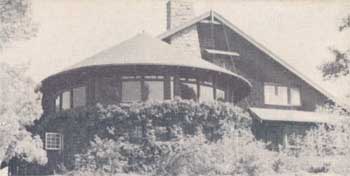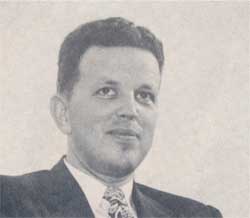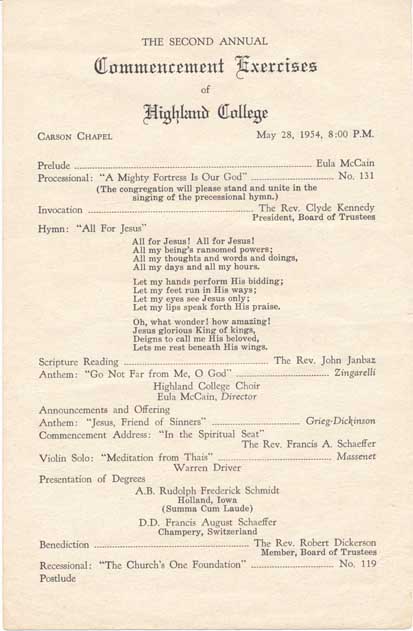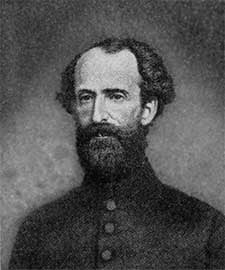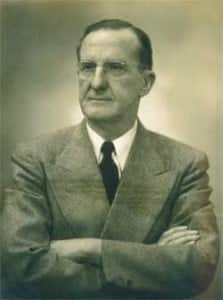Putting a School on Its Feet
In that same sad year of 1833 when the Reformed Presbyterian Church suffered a division into Old Light and New Light denominations, a future blessing for the RP’s also came that year with the birth of Henry Hosick George. Henry was born on February 20, 1833 to parents Henry and Maria (Dolman) George, in Cumberland, Ohio. The family moved to Locust Grove, Ohio in 1839 and it was there where he received his early education, later graduating from Geneva Hall in 1853.
Geneva Hall had been organized just a few years before, in 1848, and was located in Northwood, Logan county, Ohio. [not to be confused with the other Northwood, OH, in Wood county, about eighty miles north]. Thus Henry was one of its early graduates, and much of the rest of his life was lived in close connection with the school. Upon graduation from college he became a tutor at the school, and in 1856 was made Professor of Greek. Studying theology at the Northwood and Allegheny Seminaries, he prepared for the ministry and was licensed by the Lakes Presbytery of the RPCNA in June of 1857, being later ordained by the same Presbytery and installed as pastor of congregations in Cedarville and Cincinnati.
His tenure as pastor of these congregations was short-lived, first resigning from the pulpit of the Cedarville congregation in 1866 and then from the Cincinnati congregation in 1872, at which time he accepted the call to serve as the President of Geneva Hall in Northwood. He had served as the Moderator of the RP Synod in 1871, an indication in itself of his rising prominence within the denomination and perhaps a precursor to his election to serve as president. One significant change instituted at the school upon his taking the presidency was a name change for the institution, from Geneva Hall to Geneva College. On a personal note, two years later, the Ohio Central College awarded Rev. George the honorary degree of Doctor of Divinity. In 1878, Rev. George also became the pastor of the RP congregation in the nearby village of Rushsylvania, though again he was only pastor for a short term, resigning the pulpit after two years.
In 1879, under Dr. George’s leadership, the trustees began to explore the possibility of relocating the school. Four locations were under consideration, and finally Beaver Falls, Pennsylvania was chosen, largely because of a promise of 10 acres of land from the Harmony Society, a utopian pietist group. There was also an accompanying promise which had been secured from the township of Beaver Falls, a commitment of $20,000 for a building. And so construction began on “Old Main,” the original and still the central building on the Geneva College campus, with work on that building completed in 1881, despite slowdowns caused by the bankruptcy of two construction companies. Meanwhile, the school had already relocated to Beaver Falls in 1880, taking up temporary quarters in the interim.
In the early days of some institutions, there is often an unusual spirit of camaraderie and a willingness to do whatever must be done. Historian David Carson commented that in the early days of Geneva College, in the 1880’s, “The faculty did everything from collecting student tuition to planting trees on the campus…The president, in addition to his teaching, administrative duties and fund raising, was in charge of the building and grounds.”
In William Glasgow’s history of the Reformed Presbyterian Church, he appropriately commends President George as the one responsible for much of the prosperity of the College in the closing decades of the nineteenth century. Dr. George continued as President until 1890, surrendering that post to work for a time with the American Sabbath Union. Then in 1894, Dr. George was installed as the pastor of the East End Reformed Presbyterian church in Pittsburgh. Little more than a year later, he became field secretary for the National Reform Association, and he held this position until the time of his death some nineteen years later, on March 25, 1914.
[The National Reform Association is noteworthy in American history for its long-standing efforts since 1864 to amend the U.S. Constitution to include specific reference to Jesus Christ as Lord and Savior.]
Words to Live By:
I could easily put together a long list of names of those whom the Lord has used to almost single-handedly advance various works and ministries, often working against great obstacles. There would be Max Belz and the Cono Christian School, or Franklin Dyrness and the Quarryville Retirement Community, or Robert G. Rayburn and Covenant College and Seminary. The Lord raised up Henry H. George and used him to position Geneva College for future service to the Church. As John Knox said, “One man with God is always in the majority.” What is the Lord leading you to do? How will you serve in His kingdom?

